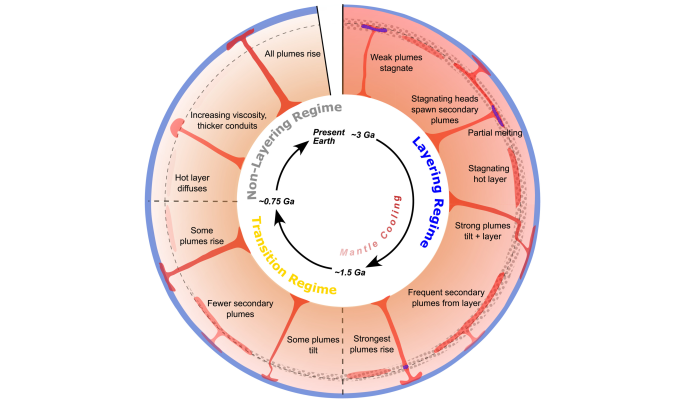Earth’s structure and dynamics have evolved quite a lot since its formation, and so has mantle dynamics and convection patterns changed along with it. It turns out that phase transition in certain mantle minerals can be an important driver of this change. Today, Ranpeng Li from GEOMAR Helmholtz Centre for Ocean Research Kiel, Germany explains how coupling geodynamic models with thermodynami ...[Read More]
Phase transitions control plume layering during Earth’s secular cooling

Figure 1: A schematic summary. Time evolving in a clockwise direction. The dashed line marks a depth of 500 km, and the dotted shading indicates the pressure–temperature range where the wadsleyite ⇔ garnet (majorite) + ferropericlase phase transformation occurs. Purple shading marks areas of partial melting. The timeline calculation assumes a mantle potential temperature of 1900 K at ~3 Ga, cooling by about 100 K per Gyr.
